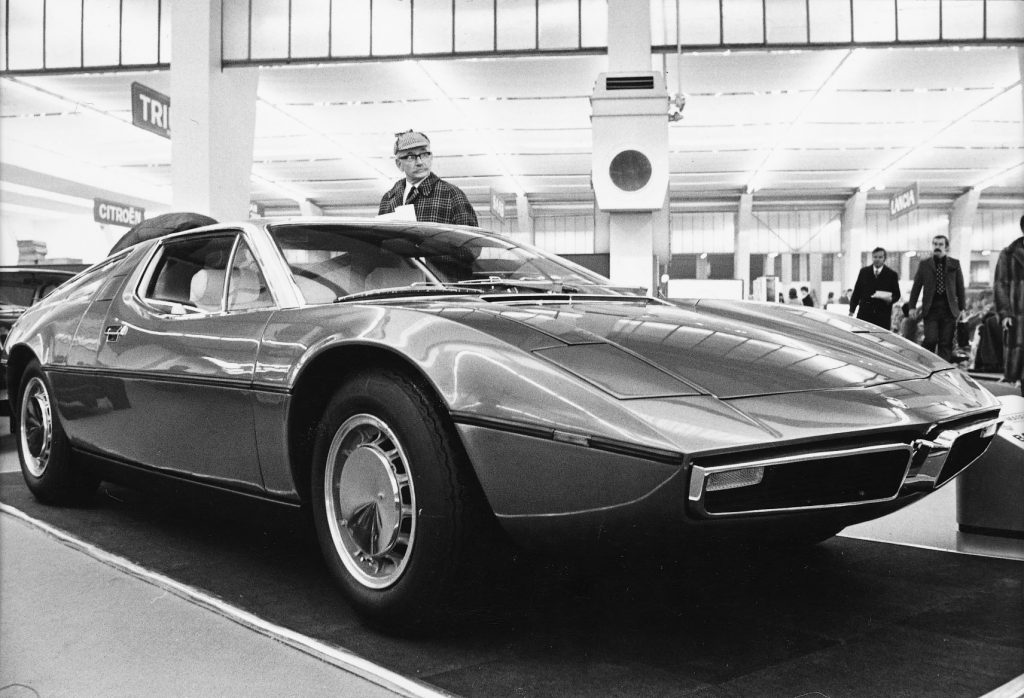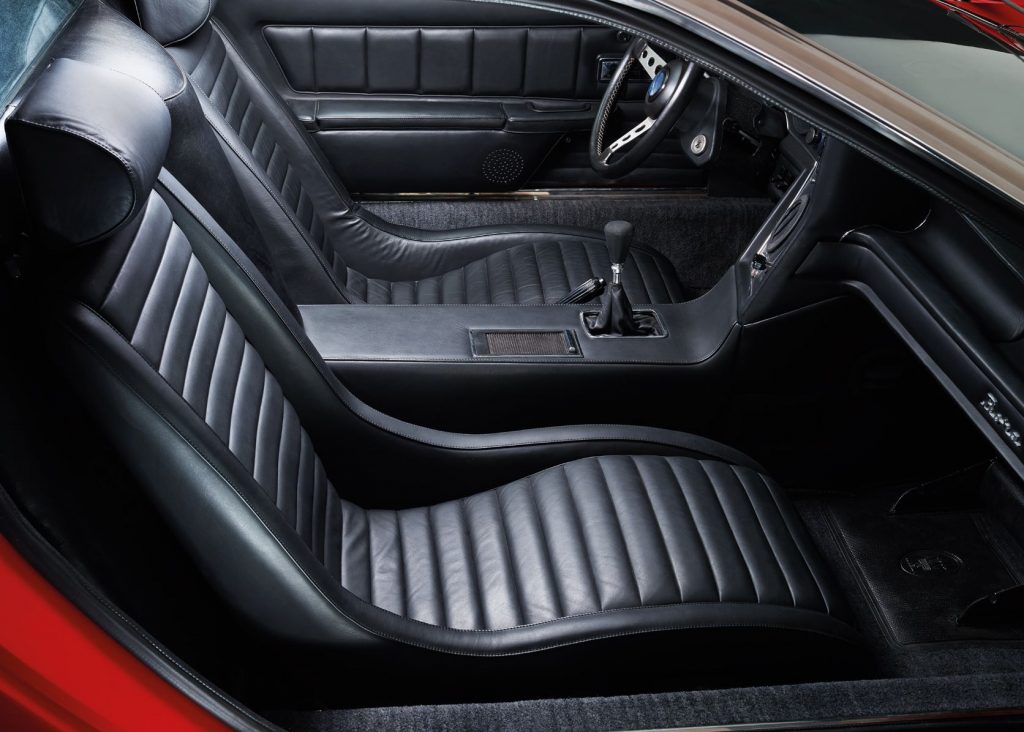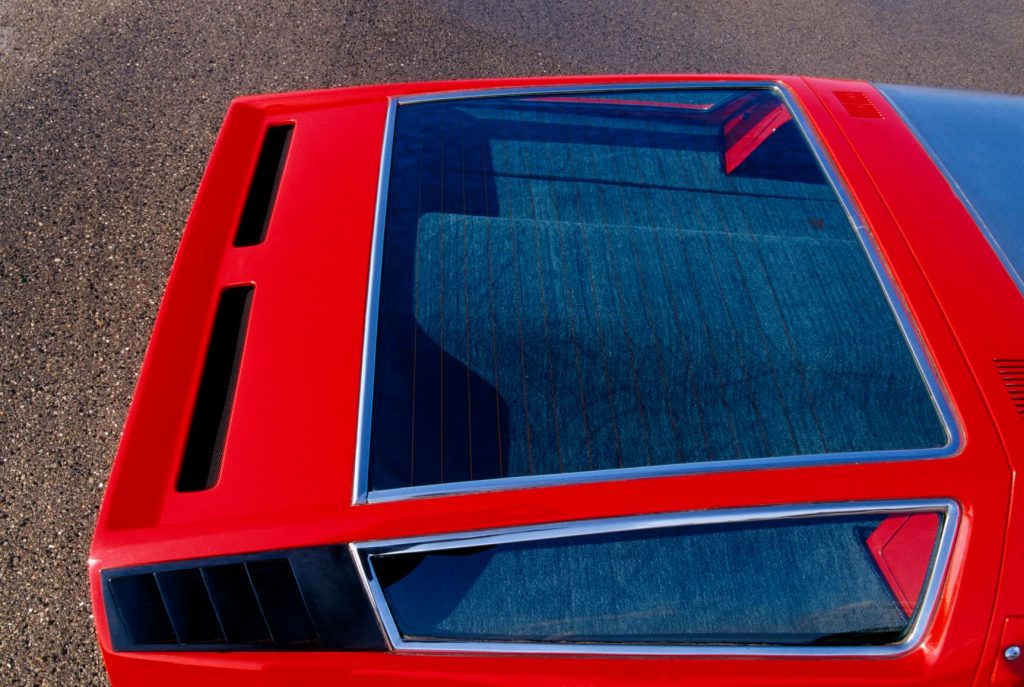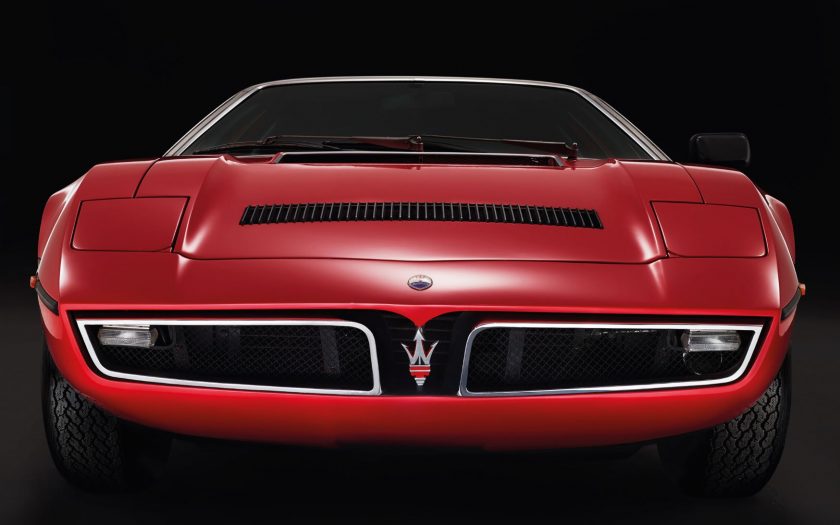MASERATI CELEBRATES THE BORA, the first mid-mounted rear engine road car in the brand’s history, just as the MC20 is the first mid-mounted rear engine vehicle in the new era.
The Maserati Bora spans 50 years of history, and reaches the dawn of a new phase for the brand: all new models share the exclusiveness, sportiness and uniqueness that have always characterised the Modenese constructor, and Bora has also handed down its engine position, first introduced on the Tipo 63 (1961), initially reprised on the MC12, and now a key feature of the new MC20.

Exactly 50 years have passed since 11 March 1971, when the Geneva International Motor Show provided the backdrop for the debut of the Maserati Bora, which was produced until 1978 with 564 cars built, plus the spectacular Boomerang, a coupé prototype created by Giugiaro with futuristic engineering and wedge-shaped bodywork.
Following the trend that had already revolutionised Formula 1 racing cars over previous years, Maserati asked Giorgetto Giugiaro of Italdesign to come up with a mid-mounted rear engine sports car with enhanced performance, design, comfort and safety.
The engine was the tried and tested 4700 cc V8 producing 310hp (231kW) at 6,000 rpm (to be joined by the 4900 cc unit two years later), mounted lengthways on a subframe installed on the monocoque.

The car’s distinctive features included retractable headlights to prevent aerodynamic drag, projecting differential on the rear axle, independent suspensions on all wheels (for the first time in a Maserati), disc brakes, dry-mounted single disc clutch, 5-speed gearbox and telescopic suspension dampers.
The Bora combined comfort and performance and had a top speed of over 280 km/h, ensuring great driving pleasure thanks to the engine’s exceptionally agile response and the quiet interior.
While the car’s engineering design carried the name of Giulio Alfieri, the aerodynamics and styling were by Giorgetto Giugiaro, who created a two-seater coupé on simple, elegant lines which gave the Maserati Bora a balanced appearance.

The approach was futuristic, with a low, slender, almost tapered front styled to cut through the air, while the front grille included two rectangular air vents with a Trident in the centre. The perfectly sleek sides were centrally divided by a thin black rubber trim, while the rear ended in a Kamm or truncated tail.
The result was a trend-setting, streamlined car perfect for the rock-and-roll spirit of the ‘70s, which is still delighting fans today.
